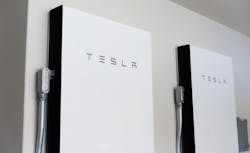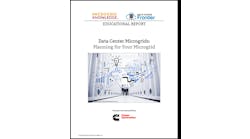Two VPP Models Help Utilities and their Customers Reap the Benefits of DERs and Microgrids
More and more, utilities are embracing the benefits of virtual power plants (VPP), which include distributed energy resources (DERs) – often home microgrids – to provide cost savings and resilience to customers and services to the grid.
How utilities participate varies. Two efforts demonstrate the different options available to prosumers, DER aggregators and DER providers.
Sunrun aggregates home microgrids in New York
One model is Sunrun’s demonstration VPP program with Orange & Rockland Utilities in New York, announced Oct. 23. It involves Sunrun aggregating home solar and storage systems — residential microgrids — and providing the power to Orange & Rockland. In this pilot, approved by the New York Public Service Commission, Orange & Rockland pays for some or all of the residential customers’ batteries and homeowners sign power purchase agreements (PPA) with Sunrun for the solar so that homeowners make no upfront payments. The aggregated solar and storage supports Orange & Rockland during peak demand periods.
Another example is Sparkfund’s distributed capacity procurement model in which utilities include VPPs as part of their integrated resource planning efforts, identifying where on the grid they need DERs most. Sparkfund then recruits customers and deploys the assets.
Utilities identify where DERs needed under Sparkfund model
“Where can these assets have the highest benefit in terms of reliability?” asked Pier LaFarge, Sparkfund's CEO. “Where can they help avoid otherwise needed expensive upgrades in distribution and transmission?”
In this model, utilities pay for customer assets — including natural gas gensets, solar and storage — in areas that need grid support. The assets are deployed by Sparkfund and offered as VPPs to utilities.
According to LaFarge, this model allows for DERs to be deployed more quickly than traditional VPPs. The company expects to install more than 200 MW per year, according to its website.
But traditional VPPs continue to serve an important role in the energy transition.
Under the pilot project in which Sunrun aggregates solar and storage located at more than 300 homes, Orange & Rockland Utilities has asked Sunrun to test different use cases for the batteries, said Chris Rauscher, head of grid services and VPPs at Sunrun. The use cases include local distribution and transmission deferral, non-wires alternatives and peak reduction.
Participating Orange & Rockland customers get solar PPAs and discounted batteries
Under the 10-year program, homeowners receive 5-kW to 10-kW solar systems under PPAs with Sunrun, which owns the solar systems. Homeowners also are given Tesla Powerwalls that are heavily discounted or free. To offer the discount, Sunrun receives an upfront payment from Orange & Rockland based on the battery capacity installed, said Rauscher.
This summer, when Orange & Rockland saw a need for peak reduction during heat waves, the utility notified Sunrun, generally asking for the batteries to be dispatched between 5 p.m. and 7 p.m., said Rauscher.
Under the program, the utility reduces its peak demand and the residential customers benefit from the resilience provided by the home microgrids. Sunrun leaves enough power in customers' batteries – at least 20% of the capacity – to operate during outages.
“That’s the type of use case for this project,” said Rauscher. “The pilot shows the way forward for all of New York. We think New York should have these VPPs all across the state.”
He declined to specify how much power Sunrun provided to Orange & Rockland over the summer but said that Sunrun’s VPP in California peaked at more than 50 MW.
Sunrun’s vehicle-to-home project in Baltimore
In addition to the Orange & Rockland project, Sunrun in July began a project with Baltimore Gas & Electric that utilizes Ford’s bidirectional F-150 Lightning electric trucks to power owners’ homes during peak demand times, freeing up power to support Maryland’s grid. Participating in the program are three Sunrun customers in Baltimore Gas & Electric’s service territory who own an F-150 Lightning paired with a Ford Charge Station Pro and Home Integration System.
Sunrun expects to see an increase in the number of bidirectional electric vehicles serving as mobile microgrids.
“We expect growth worldwide in bidirectional charging,” said Rauscher.
Helping out the grid is also the focus of Sparkfund’s efforts.
“We provide utilities with the tools and capabilities to do a fragmented procurement of many, many assets. And then we build local competitive ecosystems of local [asset] installers,” said LaFarge.
Northern States Power program aims to add 400 MW to 1,000 MW of DERs
In August, Xcel Energy’s Northern States Power, working with Sparkfund, created a distributed capacity procurement program that could add 400 MW to 1,000 MW of solar and storage, LaFarge said. Northern States Power said in its integrated resource plan (IRP) filing with regulators that it needs 4,200 MW of renewable and storage additions by 2030.
“The proposed DCP [distributed capacity procurement] program leverages our resource planning systems and processes to strategically deploy distributed assets in places that create the most value for the grid while simultaneously supporting additional load and economic growth,” the IRP said. “We believe this program shows great promise.”
In another Sparkfund program, San Diego Gas & Electric (SDG&E) is deploying gas gensets in regions vulnerable to public safety power shutoffs (PSPS).
Recruiting utility customers who want to host DERs
Under Sparkfund’s distributed capacity procurement program, Sparkfund is responsible for identifying people in areas that need the grid support who are interested in participating.
“We go and talk to those customers and we say ‘hey, your utility needs new capacity and assets in this part of the grid to make it reliable for you and your neighbors. Would you be willing to host an asset on your building? And that asset is zero cost to you, it's paid for by the utility,’” LaFarge said.
Under one project in SDG&E territory, Sparkfund focused on homes, community centers, commercial facilities and public buildings such as libraries vulnerable to wildfires and PSPS.
The assets provided to the SDG&E customers were mostly 26-kW gas gensets, said LaFarge.
Gas gensets were deployed – despite California’s goal to achieve carbon neutrality by 2045 – instead of renewables. That’s because the utility wanted to maximize the number of customers it could serve and wanted the customers to have the ability to island for three or four days because PSPS often last that long, said LaFarge.
“There's no battery technology on the market that can currently provide reliability for that amount of time,” he said.
Utilities begin to take the lead on DERs
Whether utilities are partnering with home microgrid providers like Sunrun or signing agreements with Sparkfund, they’re becoming more active in deploying DERs.
“The utilities are starting to lead as they gain more confidence in DERs being a valuable type of asset for their grid and in this moment of historic load growth. DERs have become one of the fastest and cheapest ways to do that,” LaFarge said.









